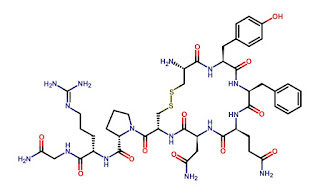Hormones | Types,Features & Definition | tagenpharmaeuticals
Hormone, a natural substance secreted by plants and animals that functions in the direction of physiological activities and in maintaining homeostasis. Hormones carry out their activities by evoking responses from particular organs or tissues that are acclimated to react to little quantities of them. The conventional view of hormones is that they are sent to their targets in the bloodstream following discharge from the glands that secrete them. This kind of flow (directly into the bloodstream) is called endocrine secretion. The description of the term hormone has been extended beyond the primary description of a blood-borne secretion, but, to add similar regulatory substances that are divided by diffusion across cell membranes rather than a blood system.
Hormones may affect many different processes of the human body like:-
●Growth and development
●Metabolism - how your body gets energy from the foods you eat
●Sexual function
●Reproduction
●Mood
General Features
●Hormonal management is closely linked to that exerted by the nervous system, and the two methods have frequently been distinguished by the rate at which each causes effects, the span of these effects, and their extent; i.e., the effects of endocrine regulation may be reluctant to develop but prolonged in influence and broadly spread through the body, whereas nervous organization is typically concerned with prompt responses that are of short duration and localized in their outcomes. Progress in knowledge, however, have transformed these distinctions.
●Nerve cells are secretory, for responses to the nerve impulses that they create depend upon the production of chemical transmitter components, or neurotransmitters, such as acetylcholine and norepinephrine (noradrenaline), which are liberated at nerve endings in tiny amounts and have only a quick action. It has been built, however, that several functional nerve cells, called neurosecretory cells, can change neural signs into chemical stimuli by producing secretions termed neurohormones. These secretions, which are generally polypeptides (mixtures similar to proteins but composed of fewer amino acids), move along nerve-cell extensions, or axons, and are typically discharged into the bloodstream at special areas called neurohemal organs, where the axon endings are in close contact with blood capillaries. Once released in this way, neurohormones function in principle related to hormones that are carried in the bloodstream and are synthesized in the endocrine glands.
The evolution of hormones:-
Hormones have a rich evolutionary history, understanding of which is essential if their properties and functions are to be understood. Many important characteristics of the vertebrate endocrine system, for example, are present in the lampreys and hagfishes, new representatives of the primitively jawless vertebrates (Agnatha), and these features were likely present in fossil ancestors that existed more than 500 million years ago. The evolution of the endocrine system in the more advanced vertebrates with jaws (Gnathostomata) has required both the appearance of new hormones and the further evolution of some of those already present in agnathans; also, extensive specialization of target organs has occurred to authorise new models of acknowledgment.
The determinants included in the first impression of the numerous hormones is mostly a subject for inference, although hormones are only one mechanism for chemical regulation, several forms of which are found in living things at all stages of development. Other mechanisms for chemical control include chemical substances (so-called organizer substances) that regulate early immature development and the pheromones that are released by social insects as sex attractants and regulators of the social system. Perhaps, in a few instances, chemical regulators including hormones developed first as metabolic by-products. A few such substances are known in physiological regulation: carbon dioxide, for instance, is involved in the regulation of the respiratory activity of which it is an outcome, in insects as well as invertebrates. Substances such as carbon dioxide are called part hormones to distinguish them from true hormones, which are specialized secretions.
Types of Hormones-:
●Hormones of Thyroid
●Insulin
●Estrogen
●Progesterone
●Prolactin
●Testosterone
●Serotonin
●Cortisol
●Adrenaline
●Growth Hormone
Hormones secreted from:-
Hormones are secreted from the endocrine glands in the body. The glands are ductless, so hormones are secreted directly into the bloodstream rather than by way of ducts. Some of the major endocrine glands in the body include:
●Pituitary gland
●Pineal gland
●Thymus
●Thyroid
●Adrenal glands
●Pancreas
●Testes
●Ovaries
These organs secrete hormone in tiny amounts and it uses only very small amounts to bring about major changes in the body. Even a very slight surplus of hormone secretion can lead to disease states, as can the most diminutive deficiency in a hormone.
Hormones and diseases
Hormones are essential for regulating most significant bodily processes, so a hormonal imbalance can affect a wide variety of bodily functions. Hormones help to regulate:
●metabolism and appetite
●heart rate
●sleep cycles
●reproductive cycles and sexual function
●general growth and development
●mood and stress levels
●body temperature
Men and women alike can be affected by imbalances in insulin, steroids, growth hormones, and adrenaline. Hormone dysfunctions are diagnosed in the laboratory as well as by clinical impression and features. Laboratory tests can be used to analyze bodily fluids such as the blood, urine or saliva for hormone abnormalities. In the case of hormone deficiency, a synthetic hormone replacement treatment may be used and in cases of excess hormone production, medications may be used to control the effects of the hormone. For example, a person with an underactive thyroid gland or hypothyroidism may be treated with synthetic thyroxine which can be used in the form of a pill, while a person with an overactive thyroid may be administered a drug such as propranolol to prevent the effects of the excess thyroid hormone.


Comments
Post a Comment